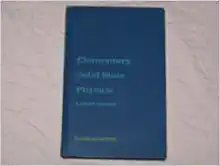Question
1. Ray optics is a convenient way to represent (a) interference, (b) diffraction, (c) reflection, (d) polarization. 2.The beam of a flashlight is seen as
1. Ray optics is a convenient way to represent (a) interference, (b) diffraction, (c) reflection, (d) polarization.
2.The "beam" of a flashlight is seen as a result of (a) diffuse reflection, (b)refraction, (c) dispersion, (d) internal reflection.
3.Being able to "see hot air" rising from a hot surface is due to (a) dispersion, (b) diffuse reflection, (c) refraction, (d) internal reflection.
4.The critical angle for a water air interface is about 480. Light will be transmitted from the water for an angle of incidence of (a) 600, (b) 520, (c) 480, (d) 440.
5.A reverse in the direction of a wave due to a boundary is called (a) refraction, (b) interference, (c) reflection, (d) polarization.
6.A change in the direction of a wave due to a change in its velocity is called (a) refraction, (b) interference, (c) reflection, (d) polarization.
7. Reflection from a plane mirror is called (a) diffuse reflection, (b) regular reflection, (c) specular, (d) b and c.
8. The separation of sunlight into component colors by means of a prism is called (a) diffraction, (b) dispersion, (c) refraction, (d) reflection.
9. Fiber optics is based on (a) diffuse reflection, (b) dispersion, (c) polarization, (d) total internal reflection.
10.Monochromatic light transmitted into a prism cannot be (a) refracted, (b) reflected by1800, (c) internally reflected, (d) dispersed. 11. Which of the following colors of light is refracted more in a typical transparent medium? (a) blue, (b) yellow, (c) green, (d) red.
12. Dispersion is responsible for (a) diffuse reflection, (b) spherical aberration, (c) chromatic aberration, (d) polarization.
13. The appearance of a "wet spot" on a hot highway in the summer is caused by (a) polarization, (b) reflection, (c) refraction, (d) aberration.
14. Light enters a more optically dense medium at (a) 1=2, (b) 1 >2, (c) 1<2 , (d) 1=c .
15. When light is incident on the boundary of a less optically dense medium at an angle equal to the critical angle (a) 2=900, (b) 1=2, (c) 1>2, (d) none of these.
16. A prism disperses white light, forming a spectrum. The best explanation for this phenomenon is that different frequencies of visible light (a) are reflected inside the prism, (b) move at different speeds in the prism, (c) are absorbed inside the prism, (d) polarized inside the prism.
17. When a wave goes from a medium of higher refractive index to one of lower refractive index, its speed (a) decreases, (b) increases, (c) remains the same.
18.The images formed by reflections in a plane mirror are (a) virtual and inverted, (b) virtual and upright, (c) real and upright, (d) real and inverted.
19. A glass prism disperses white light, forming a spectrum. This phenomenon occurs because, in glass, each frequency of light has a different (a) amplitude, (b) angle of incidence, (c) index of refraction, (d) intensity.
20. A student uses a magnifying glass to examine the crystals in a mineral specimen. The magnifying glass contains a (a) convex mirror, (b) convex lens, (c) concave lens, (d) plane mirror.
Step by Step Solution
There are 3 Steps involved in it
Step: 1

Get Instant Access to Expert-Tailored Solutions
See step-by-step solutions with expert insights and AI powered tools for academic success
Step: 2

Step: 3

Ace Your Homework with AI
Get the answers you need in no time with our AI-driven, step-by-step assistance
Get Started


